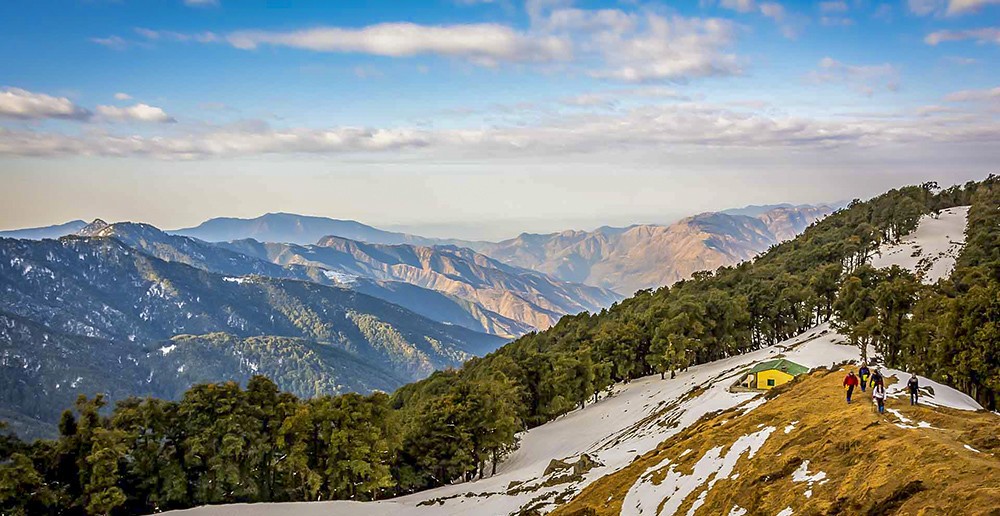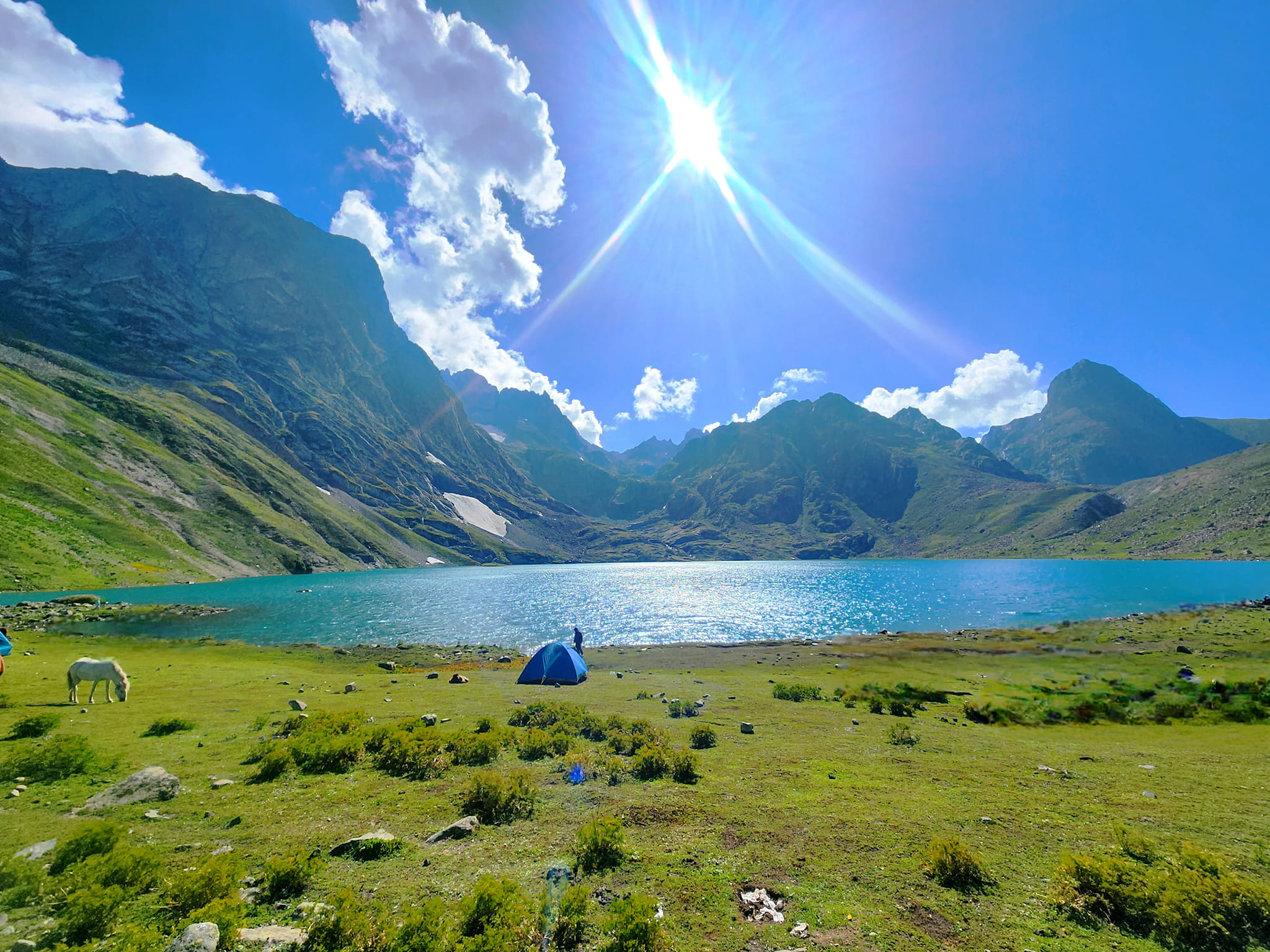Why Every Weekend Adventurer Should Add Nag Tibba to Their List

Strong 8k brings an ultra-HD IPTV experience to your living room and your pocket.
If you’re someone who daydreams of the mountains every Friday afternoon, who longs for pine forests, fresh air, and quiet trails—but only has a weekend to spare—then let us introduce you to a hidden Himalayan gem: the Nag Tibba Trek.
Tucked away in the Garhwal Himalayas of Uttarakhand, Nag Tibba—literally meaning Serpent’s Peak—rises to a height of 3,022 meters (9,915 ft) and offers everything a weekend adventurer could wish for: a quick yet immersive trek, dramatic views, snow in winter, and a brush with the deeply spiritual roots of the region.
Let’s explore why Nag Tibba deserves a top spot on your trekking wishlist.
The Allure of Nag Tibba
A Trek for All Skill Levels
One of the biggest reasons Nag Tibba is so loved is because it’s accessible for everyone—especially beginners. Unlike many Himalayan treks that require a week or more, Nag Tibba is a quick two-day adventure. It starts from the quaint village of Pantwari, which is about 85 km from Dehradun, the capital of Uttarakhand.
The trail passes through thick oak and deodar forests, charming Himalayan villages, ridge walks, and scenic campsites. As you gain altitude, you're rewarded with sweeping views of majestic peaks like Bandarpoonch, Swargarohini, Kedarnath, and even parts of the Gangotri range on a clear day.
Tripadvisor is full of glowing reviews from families, solo travelers, and friend groups who found the trek both rejuvenating and beginner-friendly.
A Peek into Sacred Ground: Cultural Significance of Nag Tibba
This isn’t just a pretty mountain. Nag Tibba holds a deeply spiritual place in the hearts of locals. The summit houses a small temple dedicated to Nag Devta, the serpent god. It is believed that villagers from the region come here to pray for the well-being of their cattle, especially during times of illness or drought.
This blend of spirituality and adventure adds a sacred charm to the journey. As you ascend the final ridge to the summit and see prayer flags fluttering in the wind, you’re reminded that this land is alive with stories, beliefs, and devotion.
You’ll find more about this spiritual connection in resources like Wikipedia, and regional travel guides such as Tour My India, which explore the religious importance of the peak in more detail.
What the Journey Looks Like: Trek Itinerary Overview
Here’s what a standard Nag Tibba weekend itinerary typically looks like:
Day 1: Dehradun to Pantwari – Trek to Kathian Campsite
Drive from Dehradun to Pantwari via Mussoorie (approx. 3–4 hours).
Begin trekking from Pantwari to Kathian Campsite (5 km | 2-3 hours).
Settle into your tent under starlit skies.
Day 2: Kathian to Nag Tibba Summit and Back
Early morning trek to Nag Tibba summit (4 km one way).
Enjoy Himalayan panoramas, visit the Nag Devta temple.
Descend back to Pantwari by noon.
Drive back to Dehradun.
This light itinerary makes it feasible to do over a weekend, especially if you leave Friday night or early Saturday morning.
For detailed info, the official Uttarakhand Tourism site provides maps, local contacts, and travel advisories.
Best Time to Do the Nag Tibba Trek
Nag Tibba is a year-round trek, but each season brings a different flavor.
Summer (April to June)
The weather is pleasant, with vibrant forests and blooming wildflowers. This is a great time for beginners to get a feel for Himalayan trekking.
Winter (October to December)
If you’re after snow, this is your window. The trail gets lightly blanketed in white, turning it into a winter wonderland—perfect for photographers and snow-lovers.
The Cultural Side of Trekking
It’s easy to get swept up in just the beauty of Himalayan treks, but let’s not forget the rich human and cultural landscapes we cross.
Take for instance, the Great Lakes Trail in Kashmir. Beyond the pristine alpine lakes, the trail echoes with stories of nomadic tribes, ancient shepherd traditions, and timeless folklore. Much like Nag Tibba, it reminds us that trekking is not just about nature—it’s also about connecting with history, faith, and people.
Nag Tibba, though shorter, holds its own share of local legends and temple lore. Chatting with villagers over a cup of chai or listening to the stories of your local guide adds a whole new dimension to your journey.
Practical Tips for Trekkers
1. Hydration is Key
There are limited natural water sources on the trail after Pantwari, so carry at least 2 liters of water per person.
2. Travel Light
Pack warm layers, a poncho, gloves, and a basic first aid kit. Lightweight trekking poles can help during descent.
3. Respect Local Culture
Be mindful around the temple at the summit. Remove shoes, avoid littering, and try to dress modestly in village areas.
4. Support Local Economy
Opt for local homestays or guides. It enriches your experience and supports the mountain communities who make this trek possible.
5. Check Weather Before You Go
Especially in winter months, keep an eye on local forecasts via IMD.
Where to Book the Nag Tibba Trek
For a well-organized and safe trek, it’s recommended to go with professionals. Himalayan Dream Treks offers experienced guides, quality gear, and curated itineraries tailored to your group’s pace and preferences.
Their local expertise ensures you get more than just a walk in the woods—you get stories, safety, and soulful experiences.
Final Thoughts
Nag Tibba is more than just another trek. It’s your passport to a short but rich Himalayan adventure. Within 48 hours, you’ll walk through whispering forests, climb sacred heights, and sleep under the stars.
So next time the weekend rolls around and the city feels too loud—know that the mountains are calling, and Nag Tibba is waiting.
Note: IndiBlogHub features both user-submitted and editorial content. We do not verify third-party contributions. Read our Disclaimer and Privacy Policyfor details.




